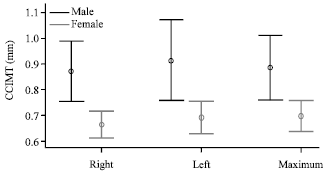Research Article
Common Carotid Intima-media Thickness in Patients with Late Rheumatoid Arthritis; What Is the Role of Gender?
Department of Radiology, Imam Reza Hospital, Tabriz University of Medical Sciences, Tabriz, Iran
Mohammad Babaei Bazzaz
Department of Radiology, Imam Reza Hospital, Tabriz University of Medical Sciences, Tabriz, Iran
Alireza Khabbazi
Department of Rheumatology, Imam Reza Hospital, Tabriz University of Medical Sciences, Tabriz, Iran
Rohollah Fadaei Fouladi
Department of Radiology, Imam Reza Hospital, Tabriz University of Medical Sciences, Tabriz, Iran











